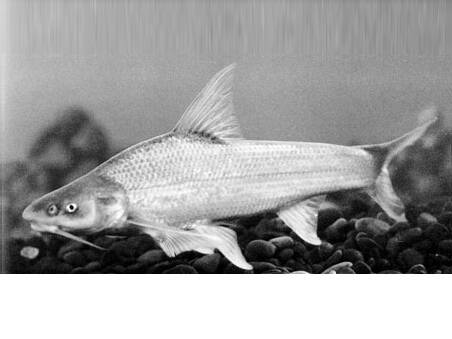The Latin name of the Northern Bronze-gudgeon is Coreius septentrionalis (Nichols), and its foreign name is Northern Bronze-gudgeon. It is a freshwater fish of the Cyprinidae family of the Cypriniformes order. It is commonly known as the Pigeon Fish and is a species endemic to China.

Northern copper fish often move in groups. They lurk under rocks or in deep waters in winter and swim upstream to spawn in spring. The reproductive period is from May to July. They spawn in small groups or not in groups. The eggs sink but can drift and develop with the water. They retreat to the downstream in September and October. Young fish feed on eggs and fry of other fish, while adult fish feed mainly on bottom-dwelling animals, as well as aquatic insects, small fish and shrimp, plant debris, grains, small snails and clams, etc. They mostly forage in turbid deep waters. They still maintain a certain feeding intensity during the breeding period.
"Goose meat in the sky and chicken in the mountains are not as good as the Yellow River pigeon fish." This is a good saying praising pigeon fish in Ningxia.
There is also a beautiful and moving legend about the name of pigeon fish: A long time ago, on the rock wall of Guanyin Cliff (ai) in Yongxin Township, there lived many beautiful and kind pigeons, but they were all ruled by the greedy, vicious and vicious pigeon demon. Every year during the harvest season, the pigeon demon drove the pigeons to carry the grain from the fields to the cave to store it for him to enjoy and squander. One year, the Yellow River flooded and the crops failed. In the spring of the following year, the farmers had no seeds and could not plant them. Men, women, old and young cried to the sky and cried miserably. At this time, a pair of beautiful pigeons saw the misfortune of the world, so they led the pigeons to take out the food from the cave and scattered it on the fields. The people were saved, but the pair of pigeons were killed. They fought hard and were beaten all over. They would rather die than surrender, and both jumped into the surging Yellow River and turned into a pair of beautiful pigeon fish, one red and one white. The pink and white pigeon fish now are their descendants.
The northern copper fish is also known as the "palace fish". It is said that it is specially used for the imperial palace. The northern copper fish belongs to the carp family, with a body length of eight or nine inches, white and tender meat, sparse scales and few thorns. After steaming, it is mellow and fragrant, rich in nutrition, delicious, and has the effect of sobering up. Therefore, it is a treasure at banquets. In the Qing Dynasty, it was a tribute fish presented to the court.
The northern copper fish originally had a large number in the upper reaches of the Yellow River, and the individuals were large, with a body length of 25 to 30 cm, a fat abdomen, small eyes, and a light red, bright body with a silvery white luster. It is rich in fat and tastes particularly delicious. It is a precious economic fish in Ningxia, Inner Mongolia, Gansu, Shaanxi, Shanxi and other places along the Yellow River. It is called "Yellow River Pigeon Fish" and is most abundant in Jingyuan.
On the one hand, long-term uncontrolled development and serious overfishing have led to a sharp decline in resources; on the other hand, the construction of water conservancy hubs such as Sanmenxia has blocked the migration channel of the northern copper fish, and the change in hydrological conditions has affected the habitat of the spawning grounds; a combination of many factors has led to the northern copper fish being endangered today.
"China Species Red List": Endangered (EN);
"China Endangered Animal Red Book Fish": Endangered
"China National Key Protected Wildlife List": Level 1.
Protect wild animals and stop eating game.
Maintaining ecological balance is everyone's responsibility!